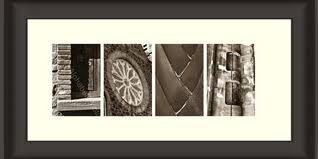Getting philosophical: Language and number sense
An alphabet is a symbol. A number is a symbol. A symbol is a shape with a special meaning like a sound or a quantity that gives it meaning. A symbol is connected to another symbol that also has a special meaning. The connection between two symbols also has a special meaning.
Symbols are not the actual thing. Words are symbols. They are tools. They are powerful tools. They help us convey ideas. But they are not the ideas. They are not the actual things they describe. There is a separation between the description and the actual object, experience or idea. Descriptions are powerful. So are objects, experiences and ideas.
Often, we think of the description as being the same as the object it describes, the experience had, the idea itself. It is hard to separate the symbol from the actual object. It is so hard.
I got into a discussion on this topic with my siblings and partner over a lovely dinner a few weeks ago. An apple, its taste, its juice in your mouth, the experience of biting into it, is complete in itself. It cannot be replaced by the word “apple” or a “description of the experience”. We had a long, fantastic discussion. Our discussion revealed how symbols and language are so deeply intertwined with the actual objects, experiences and ideas they describe.
What does this have to do with “language sense” or “number sense”?
With a Kindergartner on my hands, I am fascinated by his explorations of symbols. He asked me the other day, “Well, how were numbers invented anyway? Who came up with the first number?” This has sent us down an exploration of the history of symbols, of numbers. In our explorations, we are considering the idea that the symbol is separate from the actual object. I am amazed by how easily a 5 year-old gets this idea. So much of his world is yet unnnamed while still seen and experienced. He hasn’t yet applied language to everything he experiences, sees and knows instinctively.
Our exploration took a new turn when he came home with a “code ring” gifted by a new dear friend. We wrote a codified message to his friend last night. In those moments of translating “A” to a symbol that looked like a triangle with a dot inside it, I hoped the boy learned that there can be many symbols for the same idea. That the symbol is just a symbol. It can be replaced. But the idea it conveys is solid, complete and whole unto itself, without the symbol.


